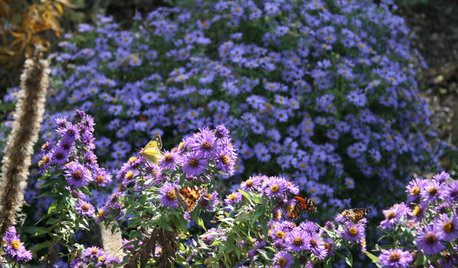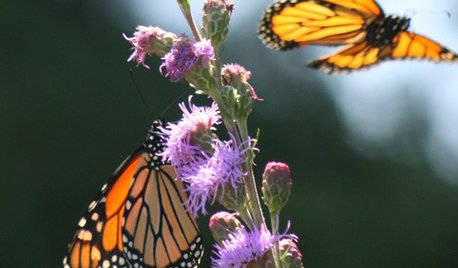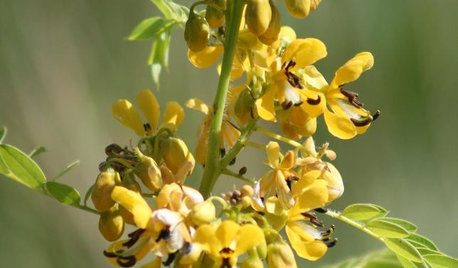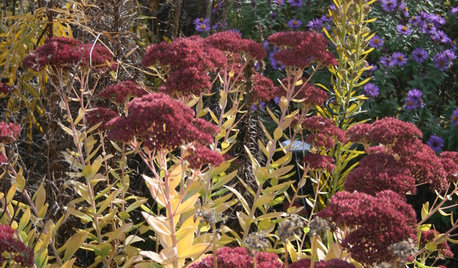How long does Asclepias incarnata bloom?
deanna in ME Barely zone 6a, more like 5b
12 years ago
Related Stories

FLOWERS AND PLANTSHelp Monarchs and Other Butterflies by Planting Common Milkweed
Summer-blooming Asclepias syriaca is an important larval host plant for the monarch butterfly and attracts a number of pollinating insects
Full Story
GARDENING GUIDESGreat Design Plant: Butterfly Milkweed, a Beacon in the Prairie
Vivacious orange flowers for you, nectar for the butterflies and bees. Asclepias tuberosa is worth planting for more reasons than one
Full Story
FLOWERS15 Native Flowers That Attract Butterflies
By picking plants from this list that are right for your location, you’ll get colorful blooms and support pretty pollinators
Full Story
GARDENING GUIDES6 Plants That Beat Butterfly Bush for the Wildlife Draw
It's invasive, a nonnative and a poor insect magnet. Check out these better alternatives to butterfly bush in the garden
Full Story
GARDENING GUIDESAttract Hummingbirds and Bees With These Beautiful Summer Flowers
Roll out a welcome mat for pollinators to keep your landscape in balance and thriving
Full Story
GARDENING GUIDESYou Don't Need Prairie to Help Pollinators
Woodlands, marshes, deserts — pollinators are everywhere
Full Story
GARDENING GUIDESGreat Design Plant: Meadow Blazing Star (Liatris Ligulistylis)
Make fast friends with the monarch butterflies and get a color show too with this adaptable U.S. Midwest native
Full Story
GARDENING FOR BUTTERFLIESGreat Design Plant: Senna Hebecarpa Puts on a Magical Show
Furry white tongues that develop into seeds? That's just one of this bee-bringing summer perennial's many talents
Full Story
GARDENING GUIDES10 Essential Wildflowers for the U.S. Central Plains
Focusing on prairie wildflowers supports the most wildlife in a low-maintenance Plains landscape
Full Story
GARDENING GUIDES8 Perennials for Great Fall Color
Trees haven't cornered the market on autumn splendor. Add these flowering perennials for a foliage sight to behold
Full StoryMore Discussions








gardenweed_z6a
terrene
Related Professionals
Sand Springs Landscape Architects & Landscape Designers · Bedford Heights Landscape Contractors · Deerfield Landscape Contractors · Fairfield Landscape Contractors · Farmington Landscape Contractors · Hilton Head Island Landscape Contractors · Kaneohe Landscape Contractors · Pine Hills Landscape Contractors · Pleasanton Landscape Contractors · Waldorf Landscape Contractors · Baltimore Decks, Patios & Outdoor Enclosures · Carlisle Decks, Patios & Outdoor Enclosures · Jackson Decks, Patios & Outdoor Enclosures · Norman Decks, Patios & Outdoor Enclosures · West Bloomfield Township Decks, Patios & Outdoor Enclosuresnandina
deanna in ME Barely zone 6a, more like 5bOriginal Author